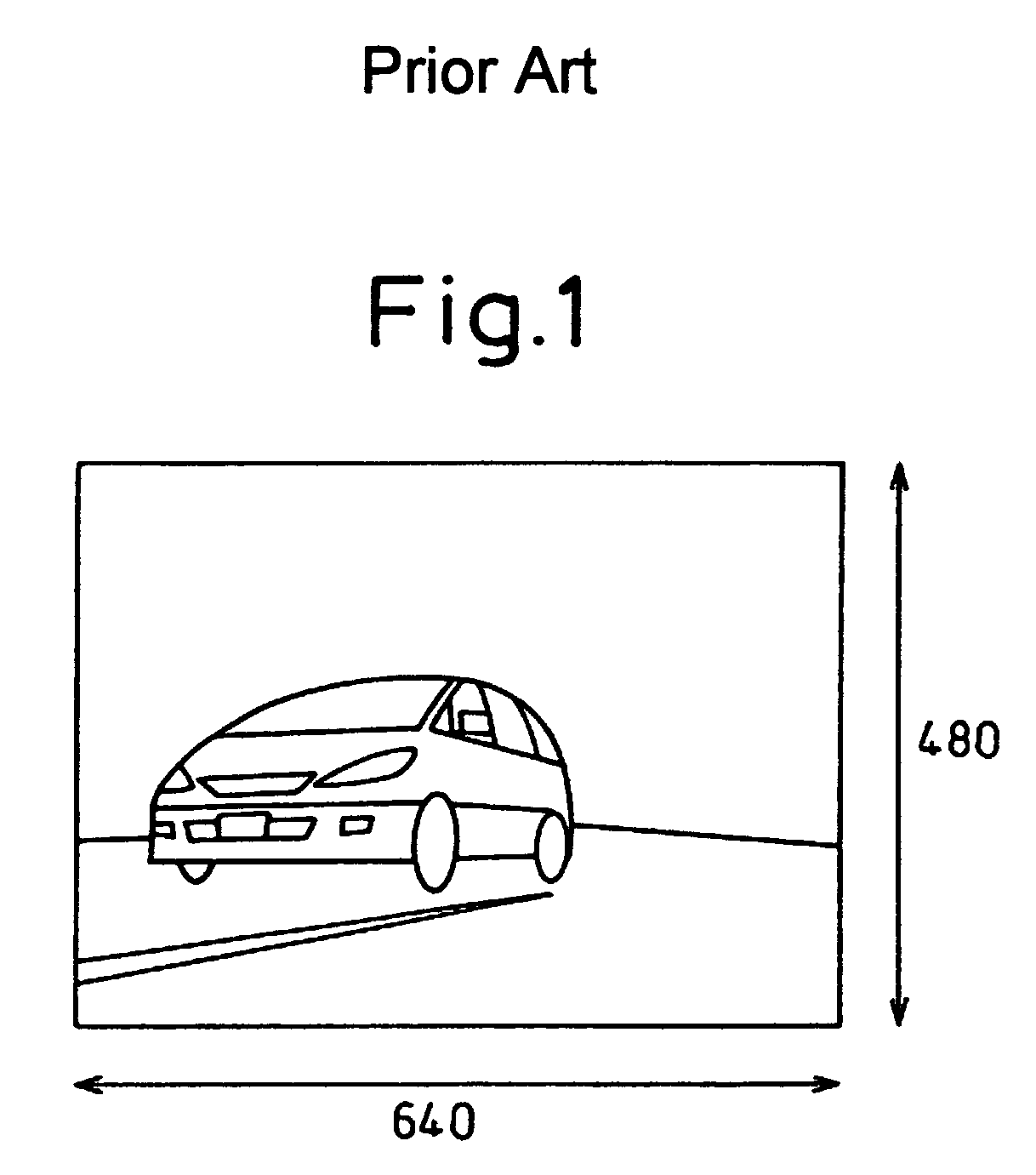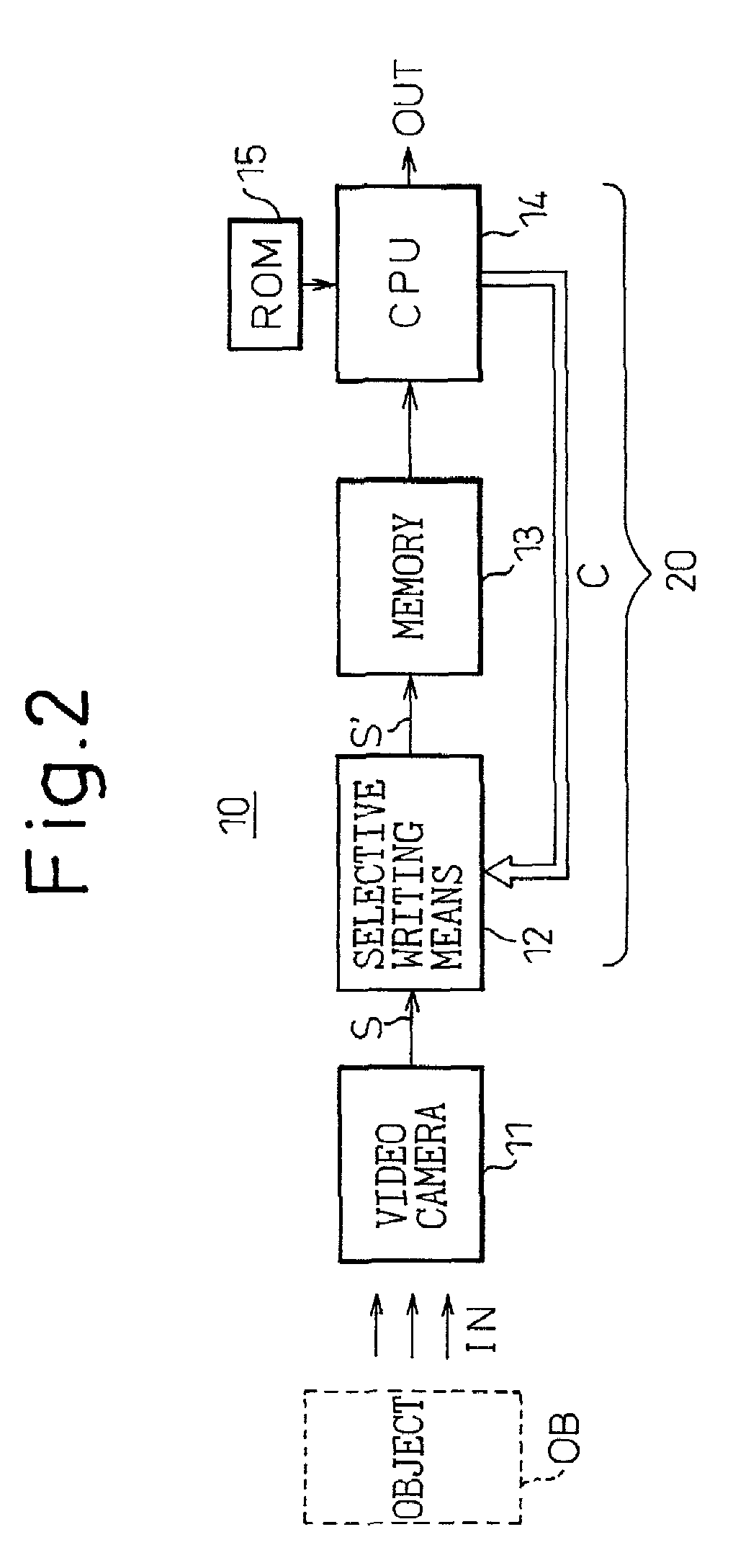Image processing apparatus for selectively storing specific regions of an image
a processing apparatus and image technology, applied in image enhancement, distance measurement, instruments, etc., can solve the problems of inherently occurring an optical axis misalignment in the stereo camera, the memory capacity needed becomes large, and the cost of memory is difficult to reduce, so as to reduce the cost of the apparatus, increase the processing speed of the cpu, and reduce the amount of data
- Summary
- Abstract
- Description
- Claims
- Application Information
AI Technical Summary
Benefits of technology
Problems solved by technology
Method used
Image
Examples
Embodiment Construction
[0041]FIG. 2 is a block diagram showing the basic configuration of the present invention.
[0042]As shown, the image processing apparatus subsumed under the present invention comprises a video camera 11 for capturing an image of an object OB, a memory 13 for storing an image signal S supplied from the video camera 11, and a CPU 14 for performing prescribed processing on the image signal S read out of the memory 13. Reference numeral 20 is a computing processor containing the memory 13, CPU 14, and their attendant circuitry (seeFIG. 3).
[0043]The notable feature of the present invention is the provision of a selective writing means 12 which is placed between the video camera 11 and the memory 13.
[0044]The selective writing means 12 performs a selective write operation by which only a designated portion of the image signal S from the video camera 11 is selected in accordance with a select command C issued from the CPU 13 and only the selected image signal S′ is written into the memory 13...
PUM
 Login to View More
Login to View More Abstract
Description
Claims
Application Information
 Login to View More
Login to View More - R&D
- Intellectual Property
- Life Sciences
- Materials
- Tech Scout
- Unparalleled Data Quality
- Higher Quality Content
- 60% Fewer Hallucinations
Browse by: Latest US Patents, China's latest patents, Technical Efficacy Thesaurus, Application Domain, Technology Topic, Popular Technical Reports.
© 2025 PatSnap. All rights reserved.Legal|Privacy policy|Modern Slavery Act Transparency Statement|Sitemap|About US| Contact US: help@patsnap.com



